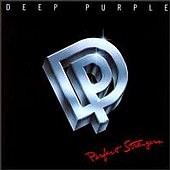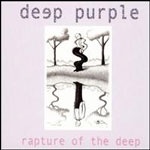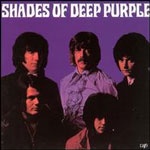
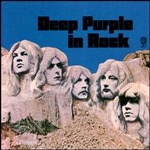
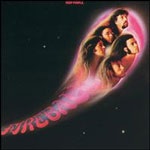

A band with as long a lifespan and as broad an influence as Deep Purple comes with a lot of legends. One of them goes like this. When the original lineup of Montrose — generally regarded as the first homegrown American heavy metal band — first met with producer Ted Templeman in early 1973, he asked them who their favorite bands were. Between the four of them they named just two groups. Led Zeppelin was one. The other was Deep Purple.
Most people recognize Zeppelin as one of the progenitors of heavy metal music; fewer understand that they went toe to toe with Deep Purple for that title. While it’s true that the band’s Mark I lineup of Rod Evans (vocals), Ritchie Blackmore (guitar), Jon Lord (keyboards), Nick Simper (bass) and Ian Paice (drums) had a more progressive bent, after Ian Gillan and Roger Glover replaced Evans and Simper and the group got its last attempt at a classical-rock fusion (Concerto For Group And Orchestra) out of the way, the band was ready to turn a corner and make a statement. In late 1969 the quintet made a conscious decision to ditch their progressive pretensions, turn up the volume and go heavy. REAL heavy.
Metal magic followed in the form of landmark albums like In Rock and
Forty years later, Deep Purple remains a hard rock institution and one of the most influential bands of its time, not to mention our July Artist Of The Month on the Daily Vault.
From its auspicious beginnings, the band would tread a twisting trail. The Mark II lineup lasted four years and four albums before Gillian and Glover left in 1973, replaced by David Coverdale and Glenn Hughes. The Mark III lineup had an initial smash with the powerful Burn album but could not sustain the group’s momentum. After a couple of less successful outings and the departure of Blackmore, the band broke up for the one and only time in its long tenure, reconvening the Mark II lineup eight years later in 1984 for the well-received Perfect Strangers album.
The band didn’t meet with great commercial success during its slicker ‘80s period, but persisted despite ongoing tensions between Gillan and Blackmore. In 1994 Blackmore finally departed for good, replaced by former
In July the Daily Vault will honor Deep Purple by covering every single studio album in their long career — plus a few live issues and other surprises — in a retrospective that will start Sunday, July 6 and run seven days a week all the way through Thursday, July 31. Most of these reviews will be appearing on the Vault for the first time.
Founded in January 1997, the Daily Vault has featured more than 5,500 reviews of more than 2,500 artists covering almost the entire musical spectrum, written by a volunteer staff from around the world. Previous Artist Of The Month retrospectives have spotlighted the work of artists from Tori Amos to Frank Zappa, including the Beatles, David Bowie,

